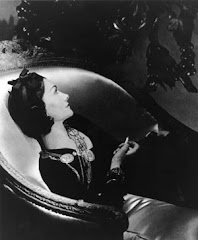Between the hour-glass figure and the little black dress, for a few years before the First World War, Paul Poiret made some of the most innovative dresses of the 20th century. This forgotten genius, who would die in poverty, almost single-handedly liberated women from the corset, created the world's first designer perfume and was the first couturier to branch out into interior design.
 | |
His reign was heartbreakingly brief. At the turn of the last century dresses were rigidly fitted to a woman's form, the bum jutted out, the breast jutted forward. A woman's outfit resembled not so much clothing as upholstery, topped with horsehair wigs.
In photographs women appear buried under their clothes, a small oval of face under dyed, frizzed, artificial fringes, and perhaps an expanse of bosom peering out from the textile immolation. Decoration lay heavily over decoration, and a woman's true shape was unimaginable.
No wonder the rich required maids to help them undress, to unhook bodices, corsets, button boots. Edwardian outfits were completely unsuitable for the decades to come, for world wars, for the emancipation of women that would follow, for the speed of the motor car and the thrill of flight.
. . . .
Influenced by the Orient, Poiret set up his own house in 1903 and two years later married Denise Boulet, a young provincial girl who was said never to have worn a corset or high collar. Her slim figure, like a lance in repose, one observer remarked, became the template for a Poiret garment.
A fragment of film from 1911 shows her looking utterly different from the crowd among which she moves - as well as being married to a designer, she was always her own stylist.
With Boulet as his muse, Poiret created dresses and coats that fell from the shoulders, and instead of being fitted to the body, flowed along its natural lines. In inspiration they were a throwback to the style of the Directoire, the period of the Empire line 100 years earlier, but they were not pallid imitations; they cancelled every rule of clothing to create the foundations for what we think of as modern dress.
Culottes, harem pants, shifts, dresses cut on the lines of a chemise - his imagination stopped nowhere and prefigured almost every design innovation to come, except for what would follow from the House of Chanel - the severe, the uniform, the pared-back black dress.
For Poiret adored sumptuous fabrics and peacock colours; he described throwing into the 'sheepcote' of pastels 'a few rough wolves: reds, greens, violets, royal blues that made all the rest sing aloud'. Boulet would step out in a wig of kingfisher blue and viridian-green stockings.
Everything he touched was revolutionary: he seems to have invented that brief 1960s fad, the baby-doll nightdress; he made dresses with asymmetrical shoulders; he introduced the hobble skirt and, even more startlingly, the lampshade dress - a triangular tent with fringes hanging from the bottom, which, as American Vogue would write, every woman in the country had bought.
Read the rest

No comments:
Post a Comment